
Shanti Ashram is a creative laboratory that addresses local issues and provides constructive solutions for communities in Coimbatore, India. With a team of only 40 members, the organization has managed to reach 250,000 people all around Coimbatore and some other areas of India. How has Shanti Ashram achieved such an impact?
If presented with this question, Vijayaraghavan Gopal (or simply Vijay, as his friends like to call him) would probably say that everything Shanti Ashram has built is based on the power of empathy. “Without our volunteers, we couldn’t do anything (…) With only 40 people in Shanti Ashram is impossible to reach 100,000 children every year”, says Vijay who is constantly encouraging and inspiring the 200 volunteers that support the work of the organization.
Certainly, among the four values highlighted in Arigatou International’s Learning to Live Together (LTLT) manual, empathy stands out as the one Vijay finds most powerful. And if there’s one thing Vijay knows inside and out, it’s the Learning to Live Together manual.
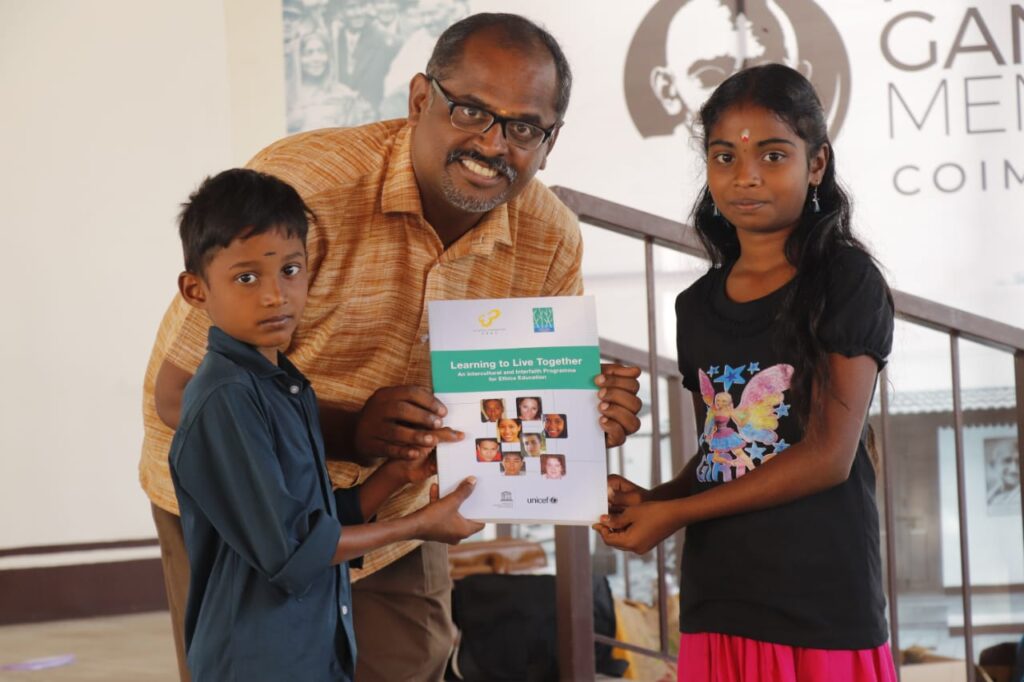
“You’ll always find the manual on my desk,” admits Vijay, who has been with Shanti Ashram for over 20 years. For more than half of that time, he has relied on the Learning to Live Together program to support his work.
Shanti Ashram, a partner of Arigatou International since 2000, is likely the organization that has been integrating Learning to Live Together for longer than any other worldwide.
“Before we used to call it Ethics Education toolkit”, explains Vijay remembering the times back in 2006 when Shanti Ashram was already working with Arigatou International in implementing ethics education programs, that would later become the structure for what is now Learning to Live Together.
Shanti Ashram was established in 1986, following the principle of Mahatma Gandhi of “Sardovaya” or “welfare/progress for all”. Since then, the organization has been carrying out numerous projects to assist vulnerable people in Coimbatore, with an emphasis on education. They focus their action on three programs: a sustainable development program, a program to foster youth leadership (headed by Vijay), and an education program with the “Bala Shanti program”, or “places of peace for children”.
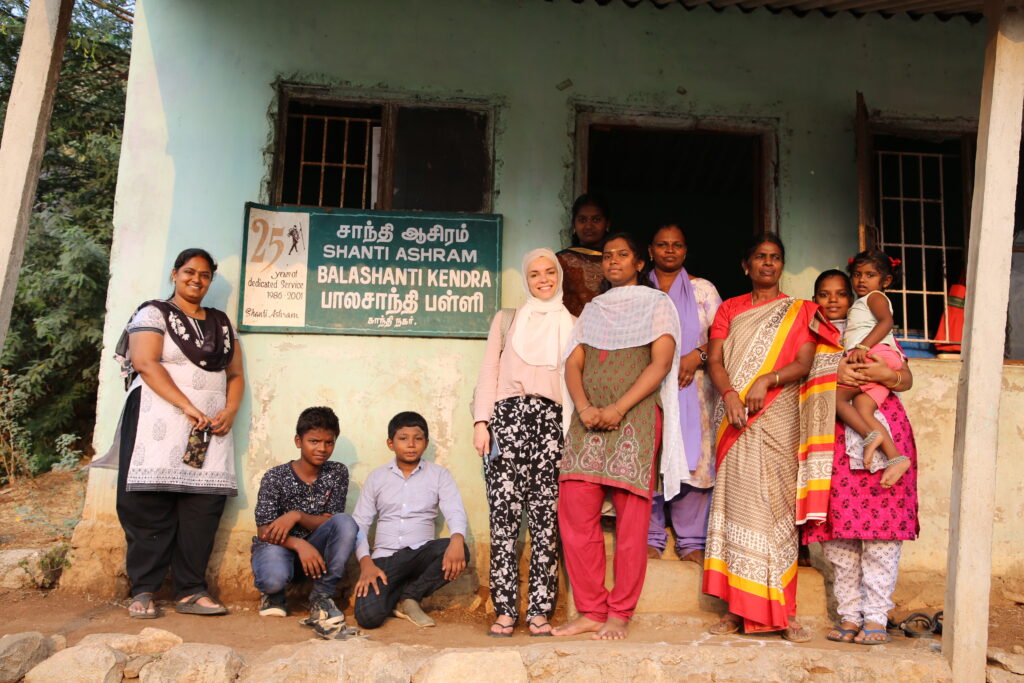
The Balashanti Kendras is an early childhood development program for vulnerable children ages 3 to 5. “We have 8 of these centers, with 25 children studying in each center. The uniqueness of our schools is that we offer ethics and value-based education. We work with the Montessori method in a Gandhian way,” explains Vijay.
Each Balashanti Kendra is managed by a single teacher, and all teachers across the eight centers have received training in the Learning to Live Together program. “We conduct workshops for all our teachers,” explains Vijay. “These workshops equip teachers with the knowledge to create safe and supportive learning environments, foster critical thinking and self-driven learning, and incorporate the values of respect, empathy, responsibility, and reconciliation into their teaching.”
Since 2024, Shanti Ashram integrated a new program into its Bala Shanti program, the Toolkit: Nurturing the Spiritual Development of Children in the Early Years. This groundbreaking initiative, developed by the Consortium on Nurturing Values and Spirituality in Early Childhood for the Prevention of Violence, has brought about meaningful transformations among parents and caregivers. It supports children’s holistic development while fostering nurturing and respectful family environments.
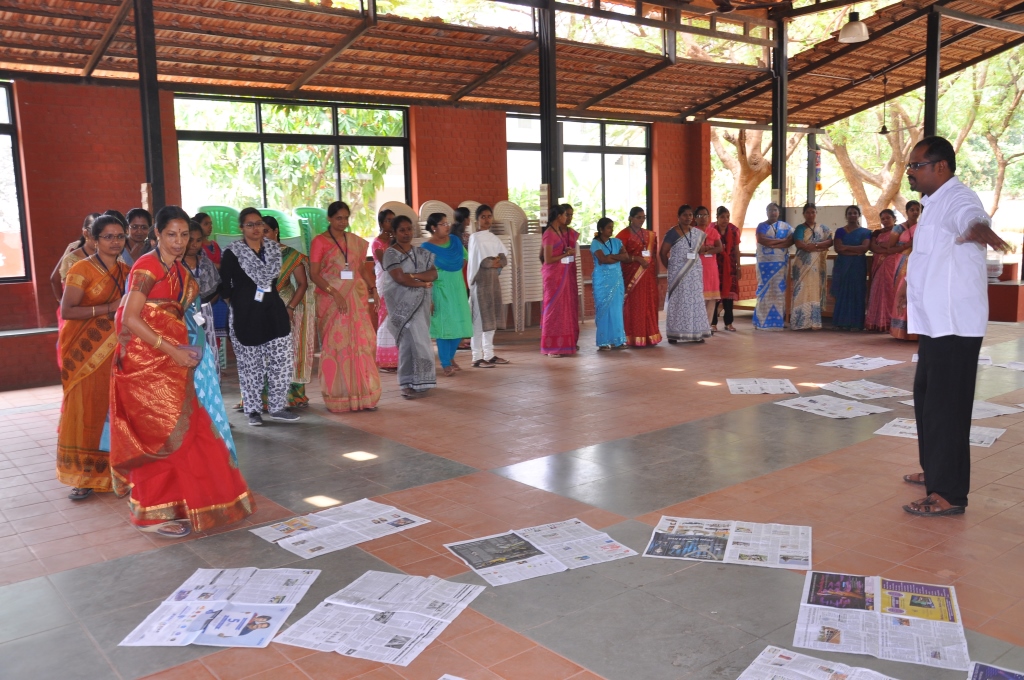
The Bala Shanti educators are implementing the Toolkit directly with children. Additionally, 171 parents and caregivers participated in educational sessions. These sessions focused on child rights, the creation of safe environments, and strategies to enhance children’s agency, as well as their social and emotional development.
But Shanti Ashram is not only using the Learning to Live Together manual to train teachers, they use it in their programs to strengthen families, during their summer camps for children and youth, in workshops for volunteers, in workshops with young leaders, and activities with parents.
“Learning to Live Together is an incredibly flexible tool. We can adapt it to a wide range of activities—for instance, short sessions, one-day workshops, observation visits for undergraduate and postgraduate students, and social immersion programs for school children. It can also be integrated into any type of training program,” shares Vijay, proudly highlighting that Shanti Ashram has the highest number of international trainers for the Learning to Live Together program.
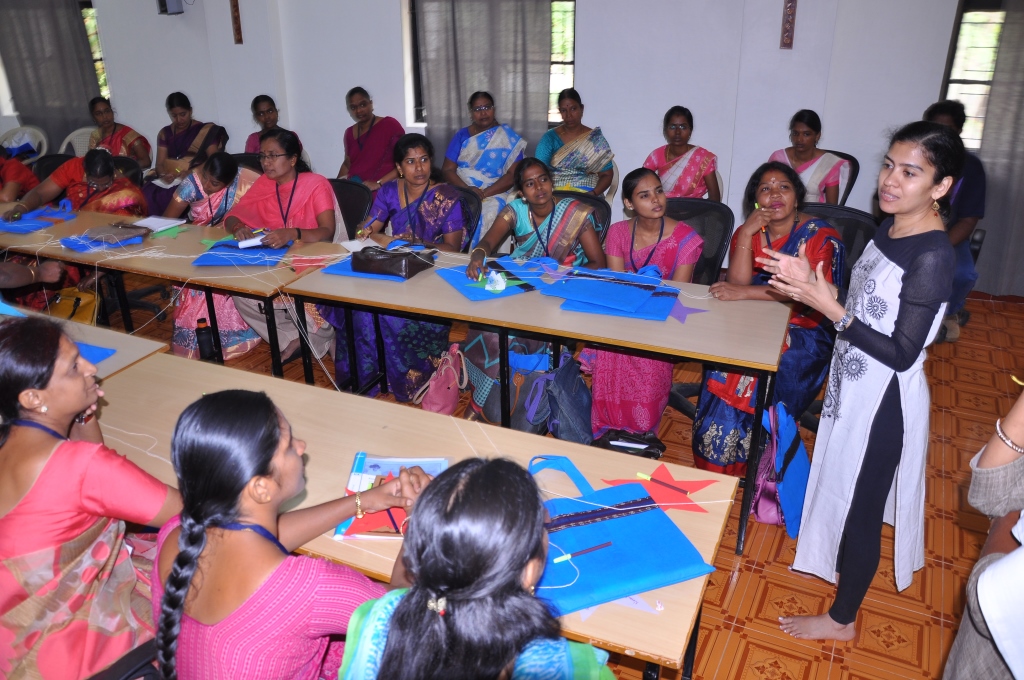
“Here in India, we have four international trainers—myself, Pavithra Rajagopalan, Prabha Karthik, and Kavya Balguruswamy—along with 220 facilitators. These young facilitators play a vital role in helping us conduct LTLT programs, reaching and engaging with diverse groups across different settings.”
After all these years of adapting and implementing the program, Vijay and his colleagues have harvested many fulfilling stories of how their work has impacted the lives of people in the community.
As Prabha Karthik, international trainer and Montessori teacher, said in an interview in 2015 “The best part of our work is that we create a space for (people) to learn, think, discuss and thrash out their own ideas.”
In 2015, with support from Shanti Ashram, Prabha and Pavithra customized the Learning to Live Together manual to develop a 10-month program to strengthen parenting skills. Prabha recalls deeply emotional moments from the workshops. One mother, for instance, shared her transformative journey: “She had a child with autism and initially believed she was being punished by having a child with challenges. However, through the program, she began to see her son as an individual in his own right, rather than simply as someone who belonged to her.”
Prabha acknowledges that the program had a profound impact on her as well. “It helped me realize that while we all love the children under our care, we are often constrained by our own conditioning and upbringing,” she reflects. “We rarely pause to think deeply about our actions in daily life. Many of us see our children as extensions of ourselves, as our property, and focus on raising them to reflect well on us, rather than embracing them as individuals with their own paths to follow.”
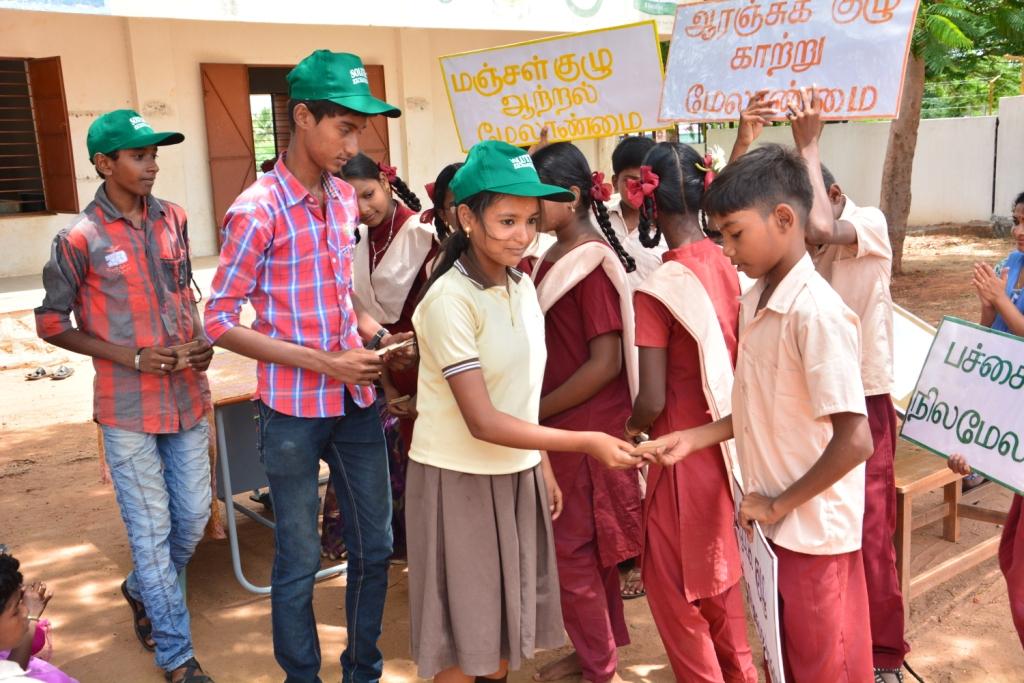
One of Shanti Ashram’s greatest strengths lies in its approach to children. The organization actively promotes a horizontal dialogue between adults and children, demonstrating a steadfast commitment to empowering its younger members and volunteers by giving them meaningful leadership roles. Despite her demanding schedule, Shanti Ashram’s director, Kezevino Aram, makes a conscious effort to be available for any child seeking her guidance. “They are even welcome to come to her house,” shares Vijay, highlighting her dedication to nurturing connections with the younger generation.
As children engage in the Learning to Live Together program, the ultimate goal is for them to become catalysts for positive change in their communities, working in collaboration with adults. The program actively fosters child-led initiatives, and Arun’s story is a powerful testament to its impact.
At just 14 years old, Arun was inspired after attending an LTLT workshop at Shanti Ashram to take action for those in need. Determined to make a difference, he initiated a food bank by collecting rice for vulnerable families—an effort that would go on to transform the lives of thousands in Coimbatore.
“After the program, he came to me and said, ‘Uncle, I want to do something for people,’” recalls Vijay. “He had the idea of collecting rice, and I encouraged it.” With support from Shanti Ashram, Arun’s project grew rapidly. Today, the food bank collects and distributes between 450 and 500 kilograms of rice, dhal, and other essential goods every month.
In 2019, this initiative received global recognition when it was awarded the Most Inspiring Child-Led Project by Arigatou International – Geneva. The success of Arun’s food bank also inspired the launch of the India Poverty Solutions program in 2012—an innovative, child-led initiative dedicated to ending child poverty. Today, India Poverty Solutions has been replicated in four other countries, expanding its reach and impact far beyond its origins.
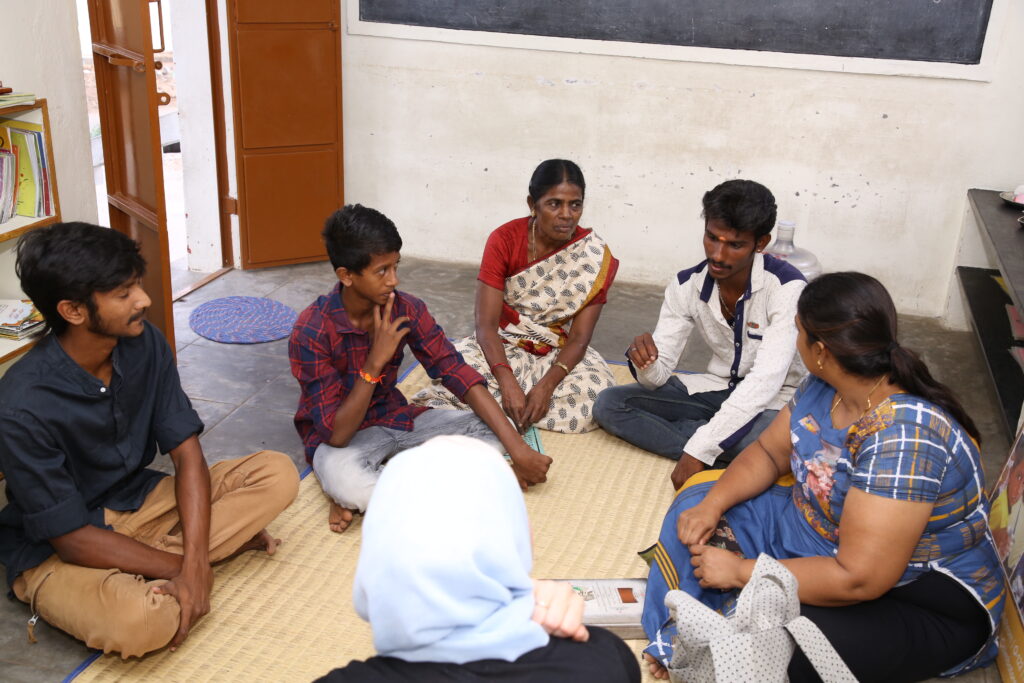
Now approaching 30, Arun continues to manage the food bank and remains actively involved in Shanti Ashram’s initiatives. Having dedicated half his life to volunteering with the organization, he is just one of many individuals who have remained deeply committed to Shanti Ashram’s mission, ensuring that its work continues to inspire and empower new generations.
“Sustainability is the key,” explains Vijay when describing how Shanti Ashram maintains volunteer engagement and keeps young people actively involved. “It’s a long and continuous process. It’s not about immediately getting children on board but about consistently providing opportunities for them. We create spaces for them to act as young facilitators and ensure there’s always room for motivation.”
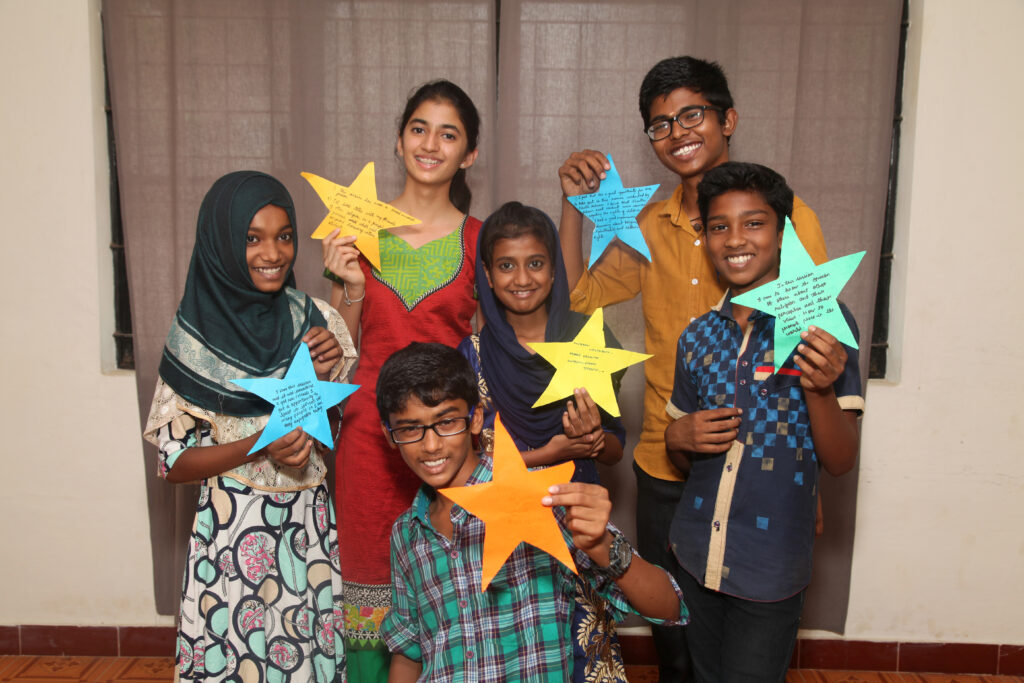
Driven by empathy, the staff and volunteers of Shanti Ashram are doing more than supporting vulnerable individuals in Coimbatore—they are shaping a new generation of young leaders. These leaders are not only empowered to drive positive change in their communities but are also equipped with the values and skills to help build a more compassionate and inclusive world.
Shanti Ashram upholds the wisdom of Mahatma Gandhi, who famously said, “If we are to teach real peace in this world, we shall have to begin with the children.” This belief continues to guide their efforts, ensuring that education and values-based learning remain at the heart of their mission.